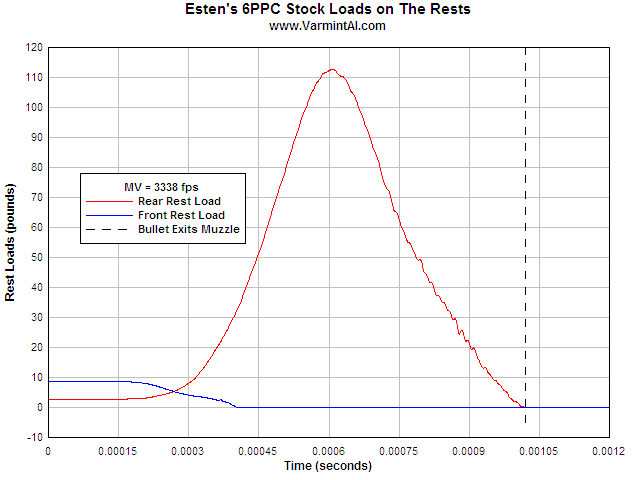WildRose: Have you ever looked at a real pressure curve for a rifle? If you had, you would see that the pressure maximizes long before the bullet leaves the rifle. For example please look at the following explanation:
Powders and cartridge testing
Where Roberto states:
"Subsequently the pressure curve during a cartridge test, as recorded in a pressure gun fitted with the same recording equipment as the closed bomb, is no longer ever rising. It first reaches a peak, then it suddenly decreases as the bullet continues down the barrel, falling to zero when the bullet leaves the muzzle."
The reason is that you want to get the most work out off the powder that you can. As the powder burns it builds pressure, however, the bullet moves and the volume becomes larger and the temperature starts dropping from a peak so the curve has its maximum before the bullet leaves the barrel.
I am absolutely sure you can out shoot me. However, you have not done a very good job of understanding any of the physics laid out here by me and some others. This is an opportunity for all of us to learn if you would take a shot at understanding the physics and helping us understand the shooting ramifications. We know to use a powder with characteristics that give us maximum work - but that is very difficult to come up with (hence all of the reloading experiments). The original question for this thread had to do with recoil and accuracy. The answer is extremely complicated and is the reason that people try many ways to reduce the motion of the rifle from the moment the trigger is pulled until the bullet has cleared the barrel. The field for this is called "internal ballistics." The physics we are using is not something we made up. It is the basic physics taught in a first physics class that covers statics and dynamics. Please try to understand what we are putting forward - unplant your feet - and look at the technical links that have been provided.
We have seen there are two sources of recoil.
1) The internal physics that take place from the time the trigger breaks until the time the bullet leaves the barrel. This has to do with a number of variables and is a subject in itself. It is the part of the recoil that you do not seem to believe in spite of all of the references that have been provided.
2) The external physics as the pressurized gas is released at high-speed from the end of the barrel. That rocket action is all that you seem to be able to believe.
The bottom line is that all of these issues have to do with rifle motion but the internal physics is what determines where the bullet will hit. The external physics is what gives additional recoil and does not have much of an effect on the projectile trajectory (since the bullet has left the house).
The initial component of internal motion recoil, vibration, and trigger action can affect the placement of the shot.
However, the addition of the second type of recoil can produce exaggerated flinch and trigger jerk that will also have influence on where the rifle moves before the bullet moves out of the barrel by influencing the internal ballistics.
You are right about muzzle brakes being very helpful (particularly for hot loads with a high ratio of powder mass to projectile mass) in reducing flinch. However, by ignoring the first type of recoil and other motions you are ignoring the forces that have an influence on bullet placement.
My bet is that you minimize these internal forces anyway when you shoot because of the way you were taught and the way you have learned. You just do not understand why. However, the question was not from you so I hope the initial poster has gotten something out of this free-for-all. I know I have. I have leaned from the sites I have visited to research the question as well as from the posts on the site. My thanks to all who have participated (yes, particularly you WildRose because you have made me dig for answers).


